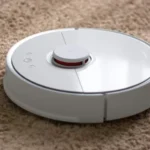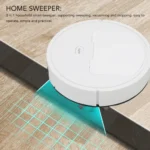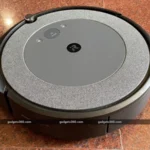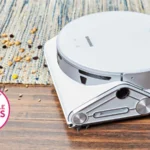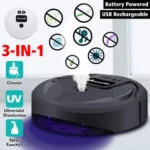As technology continues to advance, it’s no surprise that household appliances are adapting to cater to our ever-evolving needs. One such appliance that is gaining popularity in many households is the smart vacuum cleaner. With its ability to clean floors effortlessly and with ease, it’s no wonder that people are turning towards this technology as a way to make their lives easier. But with so many advancements in the technology of smart vacuum cleaners, what can we expect for the future? Let’s explore some of the potential features and improvements that could change the game.
AI and Machine Learning
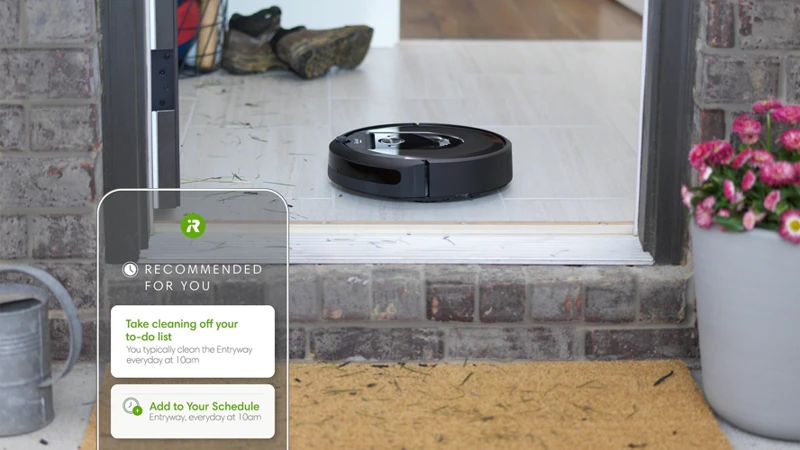
As technology continues to advance, we can expect smart devices to become even more intelligent and efficient than ever before. Smart vacuum cleaners are no exception, thanks to their incorporation of AI and machine learning. This enables them to perform tasks and make decisions on their own, without the need for constant human input. With these advancements, the future of smart vacuum cleaners is bright and promising. Let’s take a closer look at how AI and machine learning will shape the future of smart vacuums.
Smart Mapping and Navigation
One of the key features of AI and machine learning in smart vacuums is smart mapping and navigation. This technology allows the device to map the layout of the room and create a virtual map of the area to determine the most efficient cleaning path. By doing so, the device can clean the floor faster and with greater accuracy. Smart mapping and navigation technology will only continue to improve, making cleaning an effortless task.
Intelligent Obstacle Detection
Another way AI and machine learning will shape the future of smart vacuums is through intelligent obstacle detection. With advanced sensors and algorithms, the device can detect and avoid any obstacles in its path. This makes it much safer to use in households with young children or pets. With smart vacuums being more accessible and safer than ever before, it’s no wonder that they are becoming the go-to method for cleaning the floors.
Personalized Cleaning Plans
AI and machine learning will also allow for personalized cleaning plans to be developed by the smart vacuum cleaner. By analyzing the room size, floor type, and other factors, the device can create custom cleaning plans to ensure that every inch of the floor is cleaned thoroughly. This allows the user to have more control over their cleaning preferences, leading to a cleaner and fresher space.
Noise Reduction
Finally, AI and machine learning will help improve noise reduction in smart vacuums. Through continuous learning, the device can adjust its noise levels based on the environment it’s in, reducing any disturbance or distraction the user might experience during cleaning. With these advancements, smart vacuums will become even more practical in the future, making them a popular choice amongst homeowners who value peace and quiet.
With AI and machine learning, smart vacuums are set to become even more impressive and efficient than ever before. If you’re interested in finding out more about smart vacuums with voice control, check out /best-smart-vacuum-voice-control/ for our top picks.
Smart Mapping and Navigation
Smart mapping and navigation are vital components of next-generation smart vacuum cleaners. These innovations will enable the machines to map the various rooms in a house and create a cleaning schedule that takes into account the unique features of each room. One of the central technologies that make this possible is LiDAR (Light Detection and Ranging).
LiDAR works by sending out millions of laser pulses that bounce off every surface in a room and return to the vacuum cleaner. The vacuum cleaner uses this data to create a 3D map of the space, which it then uses to plan an efficient cleaning path. This is much more efficient than traditional vacuum cleaners, which typically move around a room in a random pattern and may miss spots in the process.
Smart mapping and navigation technology can also help robotic vacuums navigate obstacles and avoid bumping into furniture or finding itself in tight corners. These machines use a combination of sensors, cameras, and artificial intelligence to recognize and navigate around furniture, pets, and other obstacles.
The future of smart vacuum cleaners lies in their ability to learn and adapt to homeowners’ cleaning habits. For example, the vacuum cleaner may learn that the kitchen floor gets dirtier faster than other rooms and adjust the cleaning schedule accordingly. Additionally, pre-existing floor plans can help smart vacuums to navigate more efficiently, further improving the speed and accuracy of their cleaning routes.
Smart mapping and navigation is the cornerstone of next-generation smart vacuum technology that promises to make our lives more comfortable and stress-free. With their ability to map spaces quickly and accurately, avoid obstacles, and learn about homeowners’ cleaning habits, these machines offer a compelling alternative to traditional vacuum cleaners.
If you are interested to know more about how AI and machine learning have changed the way smart vacuums work and how they can be controlled by voice or an app, here is the link for /artificial-intelligence-smart-vacuum-voice-control/.
Intelligent Obstacle Detection
Smart vacuum cleaners already use sensors to navigate around obstacles, but intelligent obstacle detection takes it to the next level. These sensors can detect not only larger obstacles like furniture and walls but also smaller ones like toys, shoes, and even pet waste. With this capability, the vacuum cleaner can adjust its cleaning path and avoid obstacles, cleaning more efficiently and without getting stuck.
One way this technology works is through the use of 3D cameras or laser sensors. These sensors create a 3D map of the space that the vacuum cleaner is cleaning, allowing it to recognize objects and calculate distances. Some vacuum cleaners also use artificial intelligence algorithms to recognize objects and learn from new obstacles, improving their navigation over time.
Another way that smart vacuum cleaners can detect obstacles is through the use of infrared technology. These sensors emit infrared light that is reflected off of objects to measure distance and avoid collisions. Some vacuum cleaners are even equipped with a bumper that softens any collision and prevents damage to furniture and walls.
Intelligent obstacle detection is an essential feature for any smart vacuum cleaner as it not only protects the vacuum cleaner from damage but also protects households from accidents caused by vacuum cleaners. By avoiding obstacles and reducing the possibility of getting stuck, smart vacuum cleaners equipped with obstacle detection technology offer safer home environments.
If you’re interested in smart vacuum cleaners with voice control, you can check out our article on Top Smart Vacuum Cleaners with Voice Control.
Personalized Cleaning Plans
Smart vacuum cleaners that come with personalized cleaning plans are highly useful in making sure that your cleaning needs are met effectively. These devices are usually integrated with Artificial Intelligence (AI) and machine learning algorithms that allow them to observe and learn from their surroundings. They are capable of creating detailed maps which can help plan cleaning schedules based on your specific needs.
How it Works
Personalized cleaning plans are created by analyzing the various rooms within a home. Smart vacuums use infrared sensors and cameras to identify the layout, shape, and dimensions of your home to create a virtual map. Once the map is generated, you can set up specific cleaning areas within the map that require more attention or specify areas that should be avoided.
There are smart vacuums that have pre-programmed cleaning plans such as spot cleaning or edge cleaning to ensure that no areas are left unattended. You can further customize these plans by specifying the time and day of cleaning. With personalized cleaning plans, you can have a clean home even when you are not physically present.
Benefits of Personalized Cleaning Plans
Personalized cleaning plans offer several benefits that make them worthwhile investments for homeowners. Firstly, they save time and reduce the amount of physical effort required to clean a home. Secondly, they can help save energy by ensuring that no areas are cleaned unnecessarily.
Personalized cleaning plans ensure that areas that require more attention are given priority. For instance, if you have pets, areas where pet hair and dander accumulate are given more attention than areas where there is less accumulation. This results in a cleaner and healthier living space for you and your family.
Finally, these devices can help reduce the amount of noise generated during cleaning. Advanced systems like those found in new smart vacuum cleaners that offer voice control make it possible to program the device to clean at specific times thereby reducing disturbances in your home.
| Benefits of Personalized Cleaning Plans | |
|---|---|
| 1. Save time cleaning | |
| 2. Reduce the amount of physical effort required to clean | |
| 3. Make sure no areas are left unattended | |
| 4. Pay more attention to areas that require more cleaning | |
| 5. Cleaner and healthier living space | |
| 6. Reduce the amount of noise generated during cleaning | Advanced systems like those found in smart vacuum cleaners with voice control make it possible to program these devices to clean at specific times thereby reducing disturbances in your home. |
Personalized cleaning plans are an important feature to consider when investing in a smart vacuum cleaner. They ensure that your cleaning needs are met efficiently while saving you time and energy. They contribute to creating a cleaner and healthier living space for you and your family.
Noise Reduction
Smart vacuum cleaners have revolutionized the way we clean our homes. They come with a range of cutting-edge features that make cleaning easier, faster, and more convenient. One such feature is noise reduction, which is increasingly becoming an important consideration for consumers when they buy a vacuum cleaner.
When vacuuming, noise can be a significant distraction, especially if you have a baby sleeping or if you want to watch your favorite TV show. The latest smart vacuum cleaners are equipped with noise reduction technologies that make them significantly quieter than their predecessors. Some models have sound insulation that reduces noise levels to below 50 decibels, which is lower than the volume of a conversation. Other models come with quiet mode that reduces noise levels by up to 75%.
Manufacturers are aware of the importance of noise reduction and are investing in innovative technologies that make their products quieter than ever. For example, some smart vacuum cleaners come with soundproof materials that absorb sound instead of reflecting it. Others use vibration-cancellation technology that reduces noise levels by up to 50%.
Here’s a table that shows some of the top noise reduction technologies used in smart vacuum cleaners:
| Noise Reduction Technology | How it works |
|---|---|
| Sound insulation | Reduces noise levels by absorbing sound |
| Quiet mode | Reduces noise levels by up to 75% |
| Soundproof materials | Absorbs sound instead of reflecting it |
| Vibration-cancellation technology | Reduces noise levels by up to 50% |
Noise reduction is just one of the many features that smart vacuum cleaners come with. If you’re looking for a vacuum cleaner that can clean your home without disturbing your peace, then investing in a smart vacuum cleaner with noise reduction technology is one of the best decisions you can make.
Advanced Filtration Systems
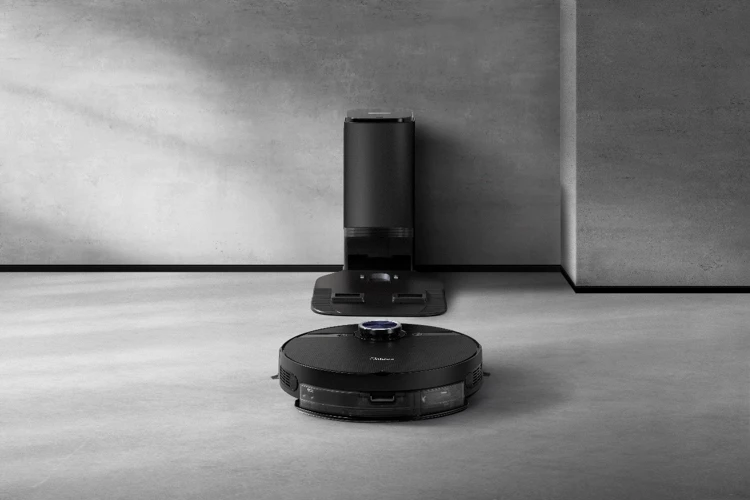
As we continue to look towards a future with cleaner homes and healthier living environments, it’s becoming increasingly clear that advanced filtration systems will play a crucial role. While the primary purpose of a smart vacuum cleaner is to remove dirt and debris, these innovative devices can also help to purify the air we breathe. By using high-efficiency particulate air (HEPA) filters and other anti-bacterial and anti-allergen technologies, smart vacuums are poised to take cleaning to a whole new level. In this section, we’ll explore the latest advancements in filtration technology and what they mean for the future of smart vacuum cleaners.
HEPA Filters and Air Purification
As the world becomes more polluted, clean air has become a precious commodity. Thankfully, HEPA filters and air purification technology have provided some reprieve. With advancements in smart vacuum cleaner technology, users can now enjoy the benefits of air purification systems that come integrated within the cleaners.
What Are HEPA Filters?
HEPA (High-Efficiency Particulate Air) filters are made of intertwined fibers that capture microscopic particles. They can capture 99.97% of particles as small as 0.3 microns, making them effective in capturing allergens like pollen, pet dander, and dust mites.
“How Do HEPA Filters Work?”
HEPA filters work by using a combination of four different filtration mechanisms: interception, impaction, diffusion, and electrostatic attraction. Interception is where particles stick to fibers in the filter, impaction is where particles collide with fibers and get stuck, diffusion is where extremely small particles move around erratically and get stuck, and electrostatic attraction is where the filter develops an electric charge that attracts particles.
“How Do Air Purification Systems Work?”
There are multiple types of air purification systems that can be integrated into smart vacuum cleaners, including activated carbon filters and UV-C lights. Activated carbon filters work by absorbing impurities, such as chemicals and odors from the air. UV-C lights emit ultraviolet light which breaks down the genetic material of airborne contaminants, making them an effective way of destroying germs, viruses, and bacteria.
Below is a comparison table of HEPA filters and air purification systems:
| Feature | HEPA Filters | Air Purification Systems |
|---|---|---|
| Type of filtration | Physical filter | Activated carbon filters, UV-C lights |
| Pollutants captured | Allergens, dust mites, and pet dander | Chemicals, odors, germs, viruses, and bacteria |
| Effectiveness | 99.97% of particles as small as 0.3 microns | Dependent on the specific air purification system, but can be very effective in eliminating contaminants |
| Lifespan | Requires periodic replacement | Requires periodic replacement or cleaning |
It’s important to note that HEPA filters and air purification systems work in tandem with each other to provide optimal air quality. This means that smart vacuum cleaners that come with both HEPA filters and air purification systems will be more effective in capturing and eliminating pollutants than those with only one of them.
The integration of HEPA filters and air purification systems into smart vacuum cleaners is an exciting development that promises to revolutionize indoor air quality. As technology continues to advance, we can expect further improvements in air purification methods, making it possible to breathe cleaner and healthier air in our homes.
Anti-Bacterial and Anti-Allergen Technologies
One of the most important aspects of smart vacuums is their ability to improve the overall air quality in your home. This is where anti-bacterial and anti-allergen technologies come into play. Here are some of the latest advancements in this area:
- UV-C Technology: This technology uses ultraviolet light to kill bacteria, viruses and other microbes that can cause allergies and even make you sick. It is a common feature in high-end smart vacuums and is particularly useful for those with allergies or breathing problems.
- Filtration Systems: Many smart vacuums come equipped with advanced filtration systems that can remove even the smallest particles from the air. HEPA filters are one of the most popular types of filters, as they can capture particles as small as 0.3 microns. This makes them ideal for reducing allergens such as pet dander, pollen, and dust mites.
- Anti-Allergen Seal Technology: This feature helps to prevent allergens from escaping back into the air after they have been sucked up by the vacuum. It is particularly useful for those with sensitivities or allergies to certain types of dust, pollen or other particles.
- Self-Cleaning Brushes: One of the biggest challenges when it comes to cleaning floors is getting the small particles and dust that tend to stick to the brush. However, some advanced smart vacuums now come equipped with brushes that can clean themselves. This not only helps to improve the life of the brush, but it also ensures that allergens and bacteria are not left behind.
- Anti-Bacterial Coatings: Some manufacturers are now equipping their smart vacuums with anti-bacterial coatings on various parts of the vacuum such as the dustbin or filter. These coatings work by killing bacteria on contact and can help to reduce the spread of germs and allergens throughout your home.
With advancements in anti-bacterial and anti-allergen technologies, smart vacuums are becoming an essential tool for those who want to improve the air quality in their homes. These features not only make cleaning easier but can also have a positive impact on your health and well-being.
Self-Cleaning Systems
One of the most convenient features that we can expect from smart vacuum cleaners in the future is self-cleaning systems. These systems will allow vacuums to not only clean your floors, but clean themselves as well. This means that users will no longer have to worry about cleaning out the dustbin or replacing the filters manually.
To achieve this, manufacturers are working on incorporating advanced technology like ultraviolet lights into their vacuums. These UV lights will help kill bacteria and germs that collect in the dustbin, ensuring that the vacuum remains clean and hygienic. Additionally, some vacuums will use self-rinsing mechanisms to remove debris and dust from their filters, allowing them to remain clean and functional.
Another possible self-cleaning mechanism that we may see in future vacuums is the self-emptying dustbin. This feature would allow the vacuum to automatically empty its dustbin into a disposal unit, eliminating the need for users to manually empty the dustbin after each use. Additionally, robotic arms may be employed to assist with the cleaning process, making it completely hands-free.
With these self-cleaning systems, users can look forward to a more efficient and hygienic cleaning experience with their smart vacuum cleaners. They will no longer have to worry about manually cleaning out filters or dustbins, and can instead rely on their vacuums to take care of the work for them.
Automation and Integration
As technology continues to evolve, our daily lives are becoming increasingly automated and integrated with our devices. Smart vacuum cleaners are no exception, with advancements in AI and machine learning enabling these household helpers to become even more efficient and convenient to use. Let’s take a closer look at some of the exciting trends in automation and integration that we can expect to see in the future of smart vacuums.
Voice and App Control
One of the most exciting features of future smart vacuum cleaners is the ability to control them using your voice or through a smartphone app. This means you can easily start, stop, and schedule cleaning sessions from anywhere, anytime.
Here are some of the benefits of voice and app control features:
- Convenience: With voice and app control, you no longer have to physically touch the vacuum cleaner or be in the same room to activate it. You can simply give voice commands or launch the app to do the task for you.
- Customization: Many smart vacuum cleaners come with customizable settings that allow you to set specific cleaning preferences. You can set cleaning schedules and choose which rooms to clean or avoid.
- Efficiency: Voice and app control features also make the vacuuming process more efficient. You can easily start and stop the cleaning process, adjust the suction power, and even direct the vacuum cleaner to target certain areas or zones.
- Compatibility: Most smart vacuum cleaners work with popular voice assistants like Amazon Alexa and Google Assistant. This means you can use your voice to control not just your vacuum cleaner, but other smart devices in your home as well.
- Integration: Smart vacuum cleaners with voice and app control also integrate seamlessly with other smart home devices. For example, you can set up routines to have your vacuum cleaner start cleaning automatically when you leave the house, or pause cleaning when the doorbell rings.
The future of voice and app control features looks very promising, as more and more people are opting for smart home devices that offer convenience and customization. The integration of AI and machine learning in smart vacuum cleaners will only make these features more intuitive and efficient in the years to come.
Integration with Smart Home Ecosystems
Smart home technology has rapidly advanced in recent years, and this progress is expected to continue in the future. As smart vacuum cleaners become more advanced, they will be seamlessly integrated into existing smart home ecosystems. Some of the ways in which smart vacuums will integrate with smart home ecosystems include:
- Interoperability: Smart vacuums will be able to communicate with other smart devices in the home, such as smart thermostats, lighting systems, and security cameras. Users will be able to control all their devices from a single app, making smart home management more convenient than ever before.
- Seamless Connectivity: Integration with smart home ecosystems will also enable smart vacuums to connect to the internet for access to online services, such as firmware updates, data analysis, and remote operation. This will enable users to control their vacuum from anywhere in the world.
- Automation: Smart vacuums will detect changes in the environment and adjust their cleaning routines accordingly. For example, they may activate when someone enters a room, or they may refrain from cleaning if there are people or animals present. This level of automation will require seamless integration with smart home ecosystems to ensure smooth operation of all devices in the home.
Integration with smart home ecosystems will be a key feature in the future of smart vacuum cleaners. As smart home technology continues to advance, we can expect to see even more integration and automation from our smart vacuum cleaners, making life easier and more convenient for users. With seamless connectivity, interoperability, and automation, smart vacuum cleaners will be an indispensable part of the smart home of the future.
Self-Charging and Auto-Emptying
One feature that we can expect from future smart vacuum cleaners is self-charging and auto-emptying. This means that the vacuum will not only clean your floors efficiently but also take care of its own maintenance needs.
Here are a few ways that self-charging and auto-emptying can be integrated into smart vacuums:
- Automated Charging: Smart vacuums equipped with this feature can easily locate their charging docks when running low on battery power. Once the battery is exhausted, the vacuum will automatically return to its charging dock and recharge itself.
- Auto-Emptying: With this feature, the vacuum cleaner can dispose of dirt and debris collected from the cleaning process without any human intervention. This feature helps to save time and to keep the vacuum functioning at optimal capacity.
- Scheduling: By scheduling cleaning times, smart vacuums can take advantage of their self-charging and auto-emptying functions at the most opportune times without any required human intervention.
- Remote Management: Integration with smart home ecosystems allows homeowners to manage their vacuums from remote locations. Users can easily monitor charging levels, cleaning cycles, and more, all without needing to be in the same location as the vacuum.
These features will make cleaning even more effortless and efficient for homeowners. By autonomously charging and emptying, smart vacuums can save time and energy, allowing users to focus on other tasks.
The combination of self-charging and auto-emptying feature, along with other advanced technologies such as AI, machine learning, and advanced filtration systems, will revolutionize the way we clean our homes.
Conclusion
In conclusion, the future of smart vacuum cleaners looks bright and promising. With the advancements in AI and machine learning, we can expect to see smarter mapping and navigation, more intelligent obstacle detection, personalized cleaning plans, and reduced noise levels in our smart vacuum cleaners.
Moreover, advanced filtration systems will become even more prevalent, offering HEPA filters and air purification, as well as anti-bacterial and anti-allergen technologies. It is worth mentioning that the self-cleaning systems for the filtration systems will become increasingly common, making maintenance more manageable and stress-free.
Furthermore, the automation and integration of smart vacuum cleaners will make them indispensable in our homes. The voice and app control, integration with smart home ecosystems, as well as self-charging and auto-emptying features, will make cleaning significantly more comfortable, convenient, and efficient.
Overall, the future of smart vacuum cleaners with these innovative technologies and automation features is exciting, as it will make daily tasks for people much more manageable. These smart devices can help us save time and energy while improving indoor air quality for people living with allergies or respiratory problems. We cannot wait to see what other developments the future holds for smart vacuum cleaners.
Frequently Asked Questions
What distinguishes smart vacuum cleaners from traditional vacuum cleaners?
Smart vacuum cleaners use advanced sensors and automation software to map and clean your home intelligently, while traditional vacuum cleaners require manual operation and do not have advanced features like voice control, app integration, or self-cleaning systems.
How do smart vacuum cleaners navigate around obstacles?
Smart vacuum cleaners use obstacle detection sensors and machine learning algorithms to map and avoid obstacles in real-time.
Do smart vacuum cleaners work on carpets?
Yes, advanced smart vacuum cleaners have settings that allow them to switch between cleaning hard floors and carpets, with powerful suction and brush-roll technology to remove dirt and debris.
What kind of filters do smart vacuum cleaners use?
Many smart vacuum cleaners use HEPA filters to trap fine particles and allergens, while others use anti-bacterial and anti-allergen technologies to remove harmful particles from your home.
How do I control my smart vacuum cleaner?
You can control your smart vacuum cleaner through a mobile app, voice commands, or by manually adjusting settings on the device itself.
How long does a smart vacuum cleaner battery last?
The battery life of a smart vacuum cleaner depends on several factors, including the size of your home, the frequency of cleaning, and the power level of the device. Many devices have a battery life of 90 minutes or more, and can automatically recharge before resuming cleaning if the battery runs low.
What are the benefits of a self-cleaning system?
A self-cleaning system can save time and energy, as it eliminates the need to manually clean the device after each use. This feature is especially beneficial for pet owners or those with allergies, as it reduces the likelihood of allergens and bacteria buildup.
Can I schedule my smart vacuum cleaner to clean while I am away from home?
Yes, most smart vacuum cleaners allow you to set a cleaning schedule through the mobile app or voice commands, so you can return to a clean home without any effort on your part.
Can smart vacuum cleaners integrate with other smart home devices?
Yes, many smart vacuum cleaners can integrate with other smart home devices, such as Google Home or Alexa, enabling you to control multiple devices with a single command.
What is the future of smart vacuum cleaners?
The future of smart vacuum cleaners will likely include more advanced AI and machine learning capabilities, better filtration systems, and more integration with other smart home devices. They may also become more affordable and accessible to consumers, leading to widespread adoption of this innovative technology.


